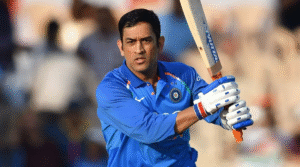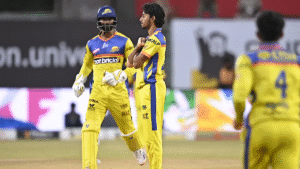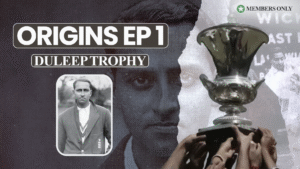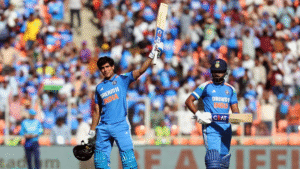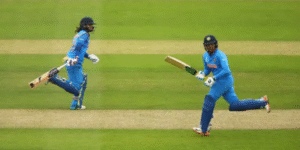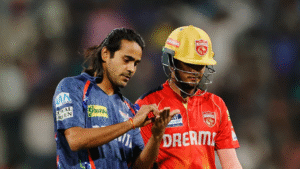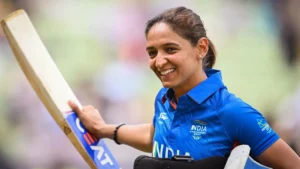Cricket’s official histories often overlook a fundamental truth: women’s cricket history stretches back just as far as men’s, with female players contributing innovations that transformed the game forever. From their first recorded match in 1745 to creating the very first Cricket World Cup, women have been shaping cricket for nearly three centuries.

The Forgotten Beginning: 1745 and Beyond
Women’s cricket history goes back to July 26th, 1745, on Gosden Common near Guildford in Surrey. The Derby Mercury reported “The greatest cricket match that ever was played in the South Part of England” between “eleven maids of Bramley and eleven maids of Hambledon, dressed all in white.”
This wasn’t a novelty exhibition. According to E.W. Swanton’s “History of Cricket,” these early women’s matches involved “heavy sums” of betting money, just like men’s games. The match report noted that “The girls bowled, batted, ran and catched as well as any men could do in that game.”
Village Cricket and Social Structure
Women’s cricket history flourished in the village setting throughout the 18th century. In 1747, George Smith organized a two-day tournament at the Artillery Ground in Finsbury, spending £80 just to transport female players – demonstrating the serious investment in women’s cricket.
The Social Dynamics
Matches often featured “married versus single women,” reflecting rural society’s important distinctions. Winners received practical prizes: plum-cakes, ale, lace, gloves, or spoons. However, some matches involved serious money – a 1777 Wiltshire match was played “for £50 and a barrel of ale.”
One contemporary observer noted the social mobility cricket offered: “nothing is more usual than for a nimble-footed wench to get a husband at the same time as she wins a smock.”
Revolutionary Innovation: The Willes Legacy
One of cricket’s most important technical developments emerged from women’s cricket history. Around 1825, Miss Willes was bowling to her brother John in practice when her delivery style caught his attention.
According to K.S. Ranjitsinhji’s “Jubilee Book of Cricket”: “Miss Willes delivered the ball just about the height of her shoulder, with a motion that gave the ball an extra impetus… Mr Willes found his sister’s style very puzzling… The game owes much to Miss Willes.”

Her brother John Willes championed round-arm bowling in first-class cricket, though he was famously no-balled at Lord’s and “threw down the ball in disgust, jumped on his horse, and rode away out of Lord’s and out of cricket history.”
The technique eventually evolved into overarm bowling by 1864, fundamentally changing cricket forever. Without Miss Willes’s innovation, modern cricket might look completely different.
Readers may also like: How Duleep Trophy Began: The Tragic Story Of An Indian Prince
The Victorian Disappearance
Despite this vibrant early period, women’s cricket history takes a tragic turn during the Victorian era. As one historical source notes: “women’s cricket was to die away in the first half of the Victorian era (1837-1901), presumably as a result of the restrictive code within which ladies were expected to operate.”
The contrast is stark. From 1745’s praise that women “bowled, batted, ran and catched as well as any men,” cricket moved to W.G. Grace’s later assessment that cricket was “not a game for women.”
Early 1900s: Voices for Change
By the early 1900s, thoughtful observers noted this absence. Framjee Patel wrote passionately in “Stray Thoughts on Indian Cricket”:
“Why not have a Ladies’ Gymkhana? It is high time that the social isolation of women ended. The purdah system must go. The seclusion of women retards much of India’s social progress… Now no sports are worth enjoying without her active participation.”
Organizational Revolution: 1926
Women’s cricket history entered a new phase on October 4, 1926, when Miss Kathleen Doman proposed forming a “central association for women’s cricket” near Victoria Station in London. The resolution passed 14 votes to 2, creating the Women’s Cricket Association (WCA).

The WCA aimed to “encourage the foundation of cricket clubs throughout the country” and “provide facilities for and bring together those women and girls who previously have had little opportunity of playing cricket after leaving school and college.”
By 1938, the organization had grown to include:
- 105 clubs
- 18 colleges
- 85 schools
- 18 County Associations
International Breakthrough: 1934-35
Women’s cricket history achieved international status when England sailed to Australia on SS Cathay in 1934. Players paid their own £94 boat fares (about £4,800 today), meaning selection wasn’t based purely on merit but on who could afford to travel.
Despite this limitation, England won 2 of 3 Tests against Australia and their single Test against New Zealand. The matches attracted massive crowds: 9,000 at Brisbane, 9,600 at Sydney, and 13,000 at Melbourne.
The First Cricket World Cup: 1973
Here lies perhaps the most remarkable chapter in women’s cricket history: women created the first Cricket World Cup in 1973, two years before the men’s tournament.
England captain Rachael Heyhoe Flint was staying with businessman Jack Hayward when he asked: “Why couldn’t we bring every national women’s team to England for a World Cup competition?” Hayward funded the entire tournament with £40,000.

Teams included England, Australia, New Zealand, Trinidad & Tobago, Jamaica, Young England, and an International XI. England beat Australia by 92 runs in the final at Edgbaston, with Enid Bakewell hitting a century.
The success was so remarkable that the ICC decided men should also have a World Cup, launching theirs in 1975.
The Long Road to Lord’s
One of the most persistent struggles in women’s cricket history was gaining access to Lord’s. The WCA first wrote to MCC in January 1929 requesting use of the ground. When refused, they sent this poem:
“‘Fair’ plays a jewel, as you should discover,
You cruel men who’ve bowled a ‘Maiden’ over.
Think of the debt you owe us, which when paid is,
Will raise you from the ‘AsheS’ Lords and LAdies”
It took 47 years of asking before MCC relented. Finally, on August 4, 1976, England played Australia at Lord’s, winning by 8 wickets.
Record-Breaking Achievements
Women’s cricket history includes several notable firsts that preceded men’s cricket:

The Archive Gap: A Historical Injustice
What emerges from studying cricket archives is both inspiring and troubling. Major cricket histories – E.W. Swanton’s “History of Cricket,” K.S. Ranjitsinhji’s “Jubilee Book,” and others – contain only scattered references to women’s cricket.
This represents a massive gap in cricket’s recorded history. We have detailed statistics of male professionals from the 1800s, but the pioneering women who played through ridicule, social pressure, and institutional barriers remain largely unrecorded.
Modern Recognition and Ongoing Challenges
Women’s cricket history continues evolving today. The success of tournaments like the Women’s T20 World Cup and increasing media coverage represents progress, but significant gaps remain in recognition and resources.
The historical pattern of women having to fight for basic access – from village greens in 1745 to Lord’s in 1976 – continues in different forms today. Understanding this history provides context for ongoing efforts to achieve true equality in cricket.
The Innovation Legacy
Beyond organizational battles, women’s cricket history reveals consistent innovation:
- Technical Development: Miss Willes’s contribution to bowling technique
- Tournament Format: Creating the World Cup concept
- Playing Style: Early reports praised women’s fielding and tactical awareness
- Social Integration: Village cricket showed women’s natural inclusion in community sport
Lessons for Modern Cricket
Women’s cricket history offers several insights for today’s game:
- Innovation comes from inclusion – technical advances often emerged from diverse participation
- Institutional barriers slow progress – the 47-year wait for Lord’s access shows how exclusion harms the sport
- Financial support matters – early success required patrons like Jack Hayward
- Media attention drives growth – the crowds at 1930s international matches proved public interest existed
The Continuing Story
Women’s cricket history isn’t just about the past – it’s about recognizing that women have always been part of cricket’s DNA. From 1745’s village greens to today’s international tournaments, women have consistently contributed to cricket’s development despite facing institutional resistance.
The next time someone suggests women’s cricket is a recent development, the historical record provides a clear response: women have been playing, innovating, and improving cricket for nearly three centuries. They created the first World Cup, may have invented overarm bowling, and demonstrated that cricket’s greatest innovations come from embracing its full community of players.
Understanding women’s cricket history isn’t just about giving credit where it’s due – it’s about recognizing that cricket’s future depends on learning from its complete past, not just the parts that received official recognition.

